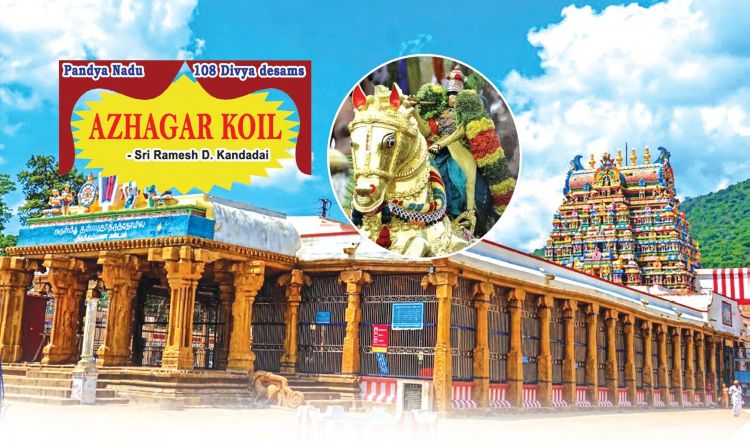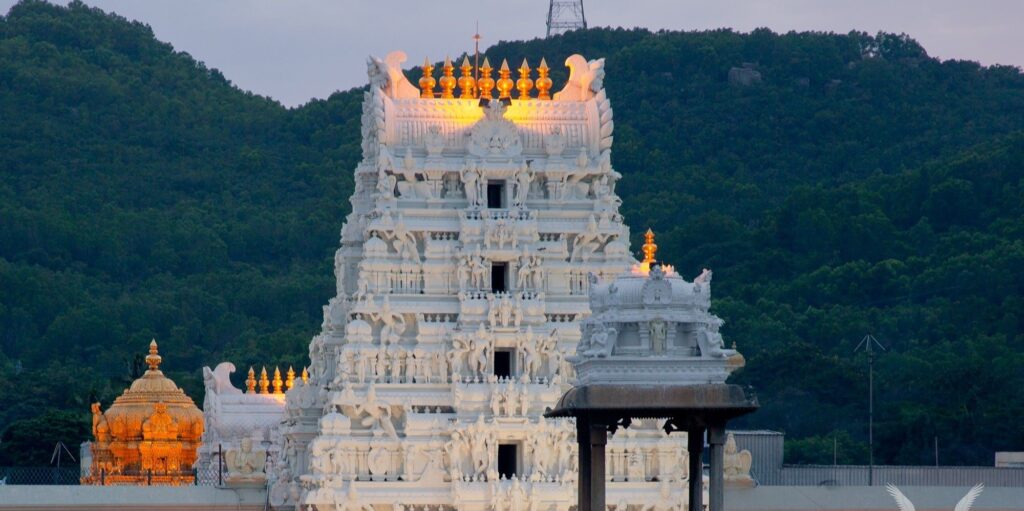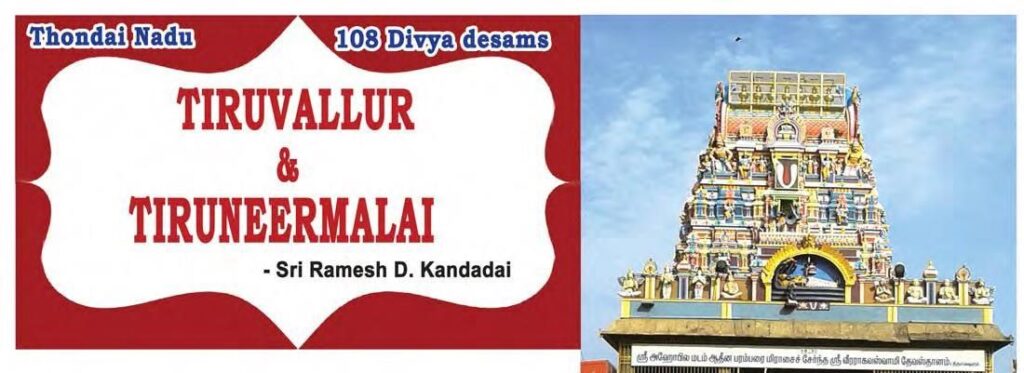Arulmigu Kallazhagar Sundaraja Perumal Temple Location Sundaraja Perumal Temple Divya Desam is located approximately 20 km north of Madurai in Tamil Nadu on the slopes of Azhagar Malai which is also the part of a reserve forest. Since time immemorial, monkeys abound in this area. Click here for the temple location on Google Maps. Azhagar Read More
Tag: 108 divya desam
A Divya Desam or Vaishnava Divya Desam is one of the 108 Vishnu and Lakshmi temples that is mentioned in the works of the Alvars, there are a total of 108 Divya Desams.
Sri Yoga Narasimha Swamy Temple, Sholinghur (108 Divya Desams)
Sholinghur Temple Sri Yoga Narasimha Swamy Temple is located on a hilltop in the town of Sholinghur, about 100 km west of Chennai. It is easily reachable by road. click here for the “Arulmigu Sri Yoga Narasimha Swamy Temple” location on Google Maps Sthalapuranam According to legend, the sage Vishwamitra received the title of Brahmarishi Read More
Sri Parthasarathy Swamy Temple (108 Divya Desams) – Tiruvallikeni (Triplicane)
Sri Parthasarathy Swamy Temple – Location Tiruvallikeni temple is located in the heart of the city of Chennai on the shores of the Bay of Bengal. One of the first three Alwars identified it. It is probably one of the oldest structures in Chennai with approximately 1400 years of history. The temple appears to have Read More
Sri Sthala Sayana Perumal Temple, Mahabalipuram (Divya Desams)
Sri Sthala Sayana Perumal Temple Location & Introduction: This temple is located approximately seventy km due south of Chennai on the shores of the Bay of Bengal in a small town called Mahabalipuram. Click here for the temple location on Google Maps Sri Sthala Sayana Perumal Temple Sthalapuranam According to legend, Pundarika Maharishi wished to Read More
Nithya Kalyana Perumal Temple, Thiruvidanthai (Divya Desams)
Nithya Kalyana Perumal Temple Location & Introduction: Tiruvidanthai / Thiruvidanthai is a small village on the outskirts of Chennai on the shores of the Bay of Bengal about forty km due south of Chennai. The temple was built by the Pallavas with the latest additions by Cholas. Click here for the temple location on Google Read More
Divya Deshams
Everything about Divya Deshams Ritual is an external demonstration of religion. It provides a scope for us to observe religion outwardly. It is akin to the feet of religion. It may not be the essence of the religion, yet it is not a non-essential part of the religion. It is, so to say, an outer Read More
Tiruneermalai Neervanna Perumal Temple (108 Divya Desams)
Tiruneermalai Neervanna Perumal Temple (Thondai Nadu) Location This temple is located just a few km west of the Chennai inner ring road, Chennai. It is very accessible from Tambaram. Sthalapuranam The sage Valmiki came down to this hill after worshipping the three forms of Lord Ranganatha, Lord Nrusimha and Lord Trivikrama feeling dissatisfied because he Read More
Sri Veera Raghava Perumal, Tiruvallur (108 Divya Desams)
Thondai Nadu – Lord Sri Veera Raghava Perumal – Tiruvallur Location and Introduction Tiruvallur is located nearly 30km west of Chennai and just north of the Chennai-Bengaluru Expressway. Click here for the Temple Location (Google Maps) Sthalapuranam According to legend, the sage Salihotra used to grind rice into flour and share half of it with Read More
Ennai Petra Thayaar samedha Bhaktavatsala Perumal Temple – Tirunindravur – 108 Divya Desams
Arulmigu Ennai Petra Thayaar samedha Bhaktavatsala Perumal Temple – Tirunindravur Tirunindravur (30 km off Chennai to the west) is a suburb of Chennai off the Chennai- Bengaluru highway. Sthalapuranam Legend has it that Mahalakshmi (Thiru) became angry with Samudrarajan and came away from Srivaikuntam to reside here. Even Samudrarajan’s best efforts could not convince her Read More
Sri Vaikunta Perumal Temple (Tiruparameswara Vinnagaram) – 108 Divya Desams
Tiruparameswara Vinnagaram (better known as Vaikunta Perumal Temple) is located in Kanchipuram, 70 km west of Chennai. Sri Vaikunta Perumal Temple – Sthalapuranam Legend has it that the dwara palakas of Mahavishnu were born as Pallava and Villava and they performed Ashwamedha yajnam at the temple’s location. The Lord gave darshan as Parameswaran or Vaikuntanathan Read More



